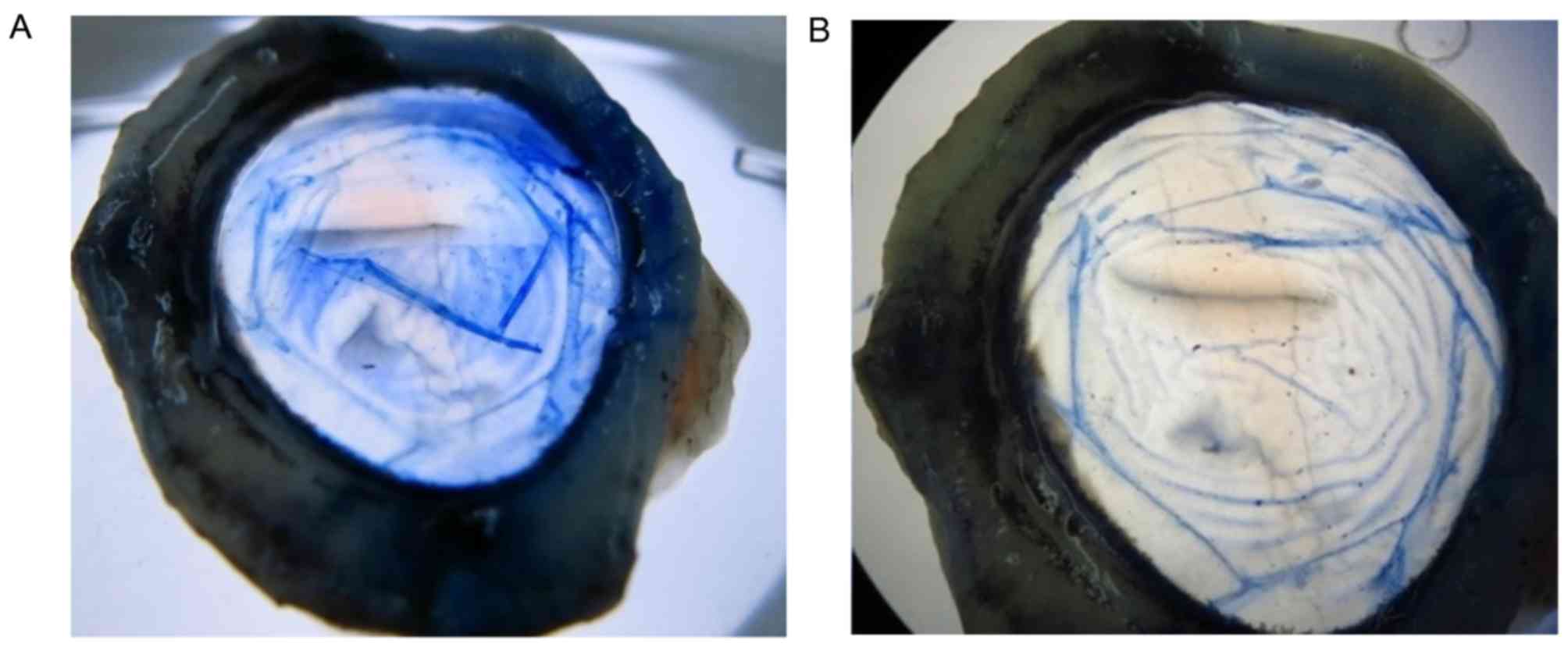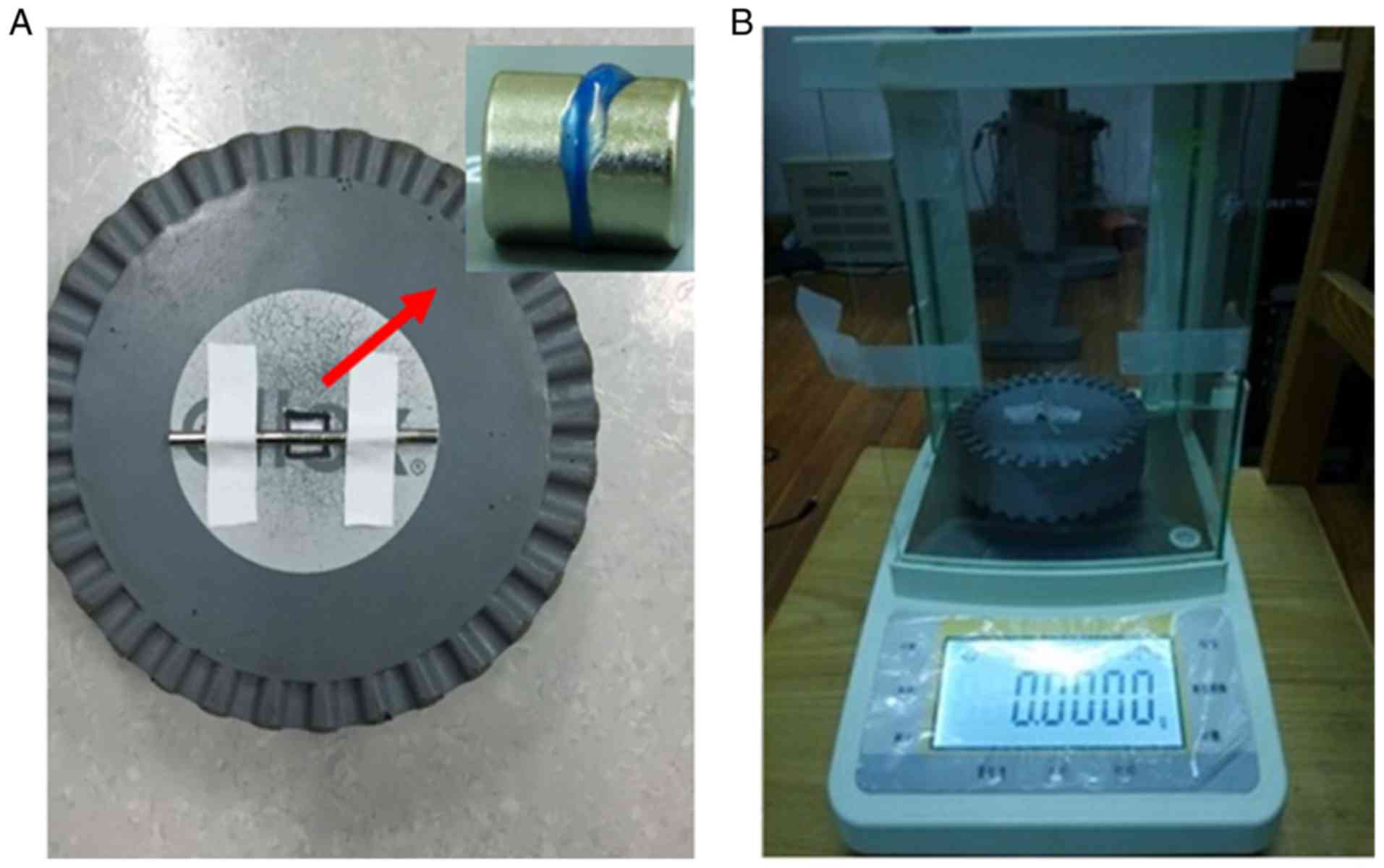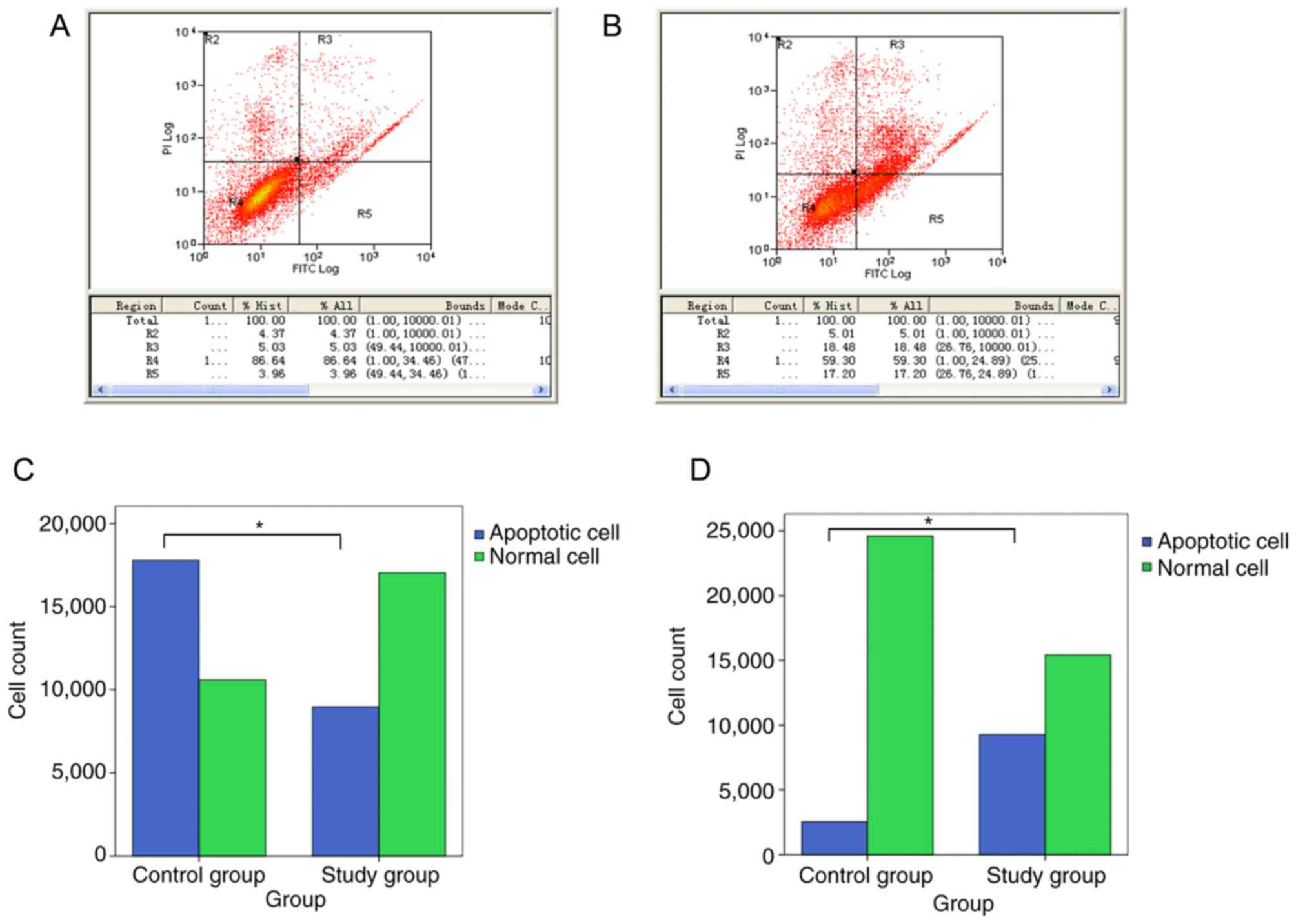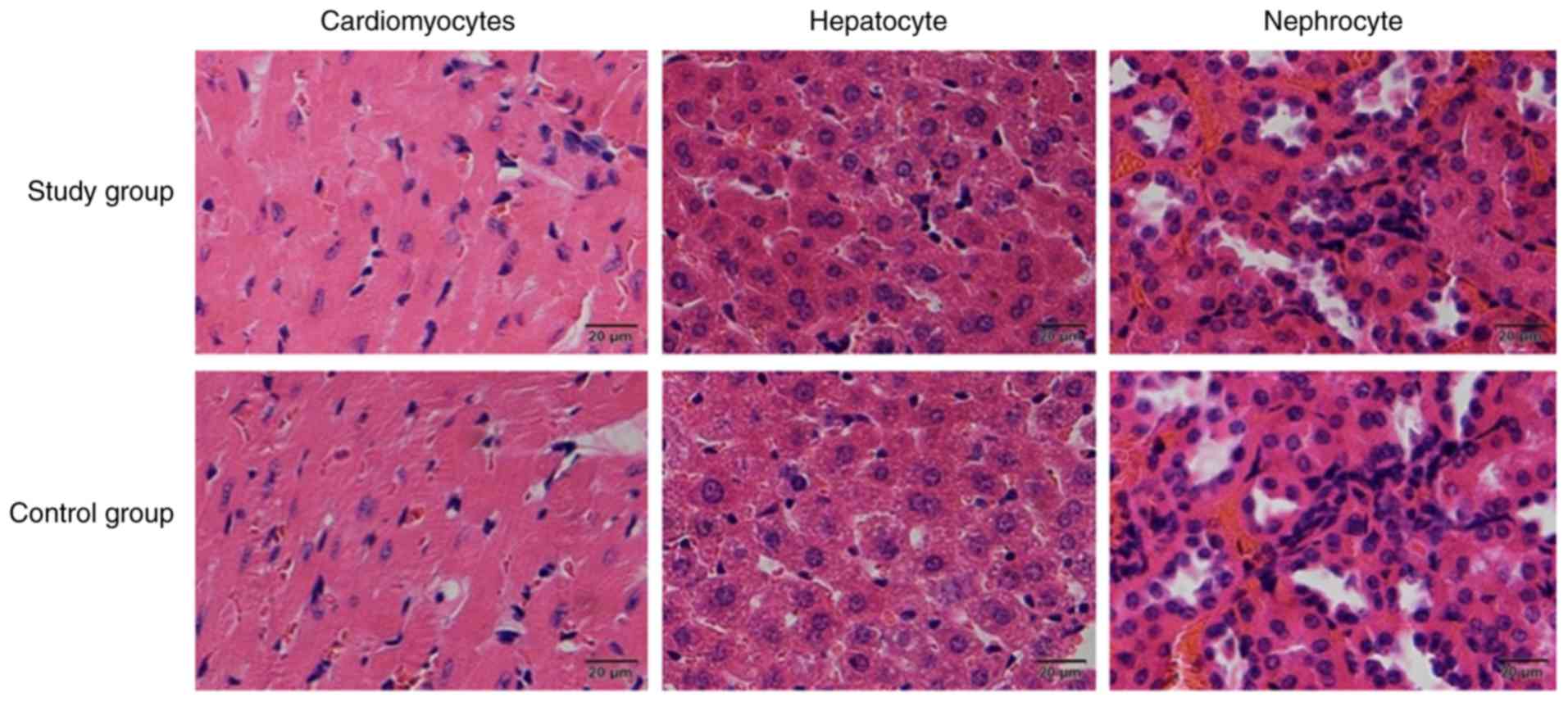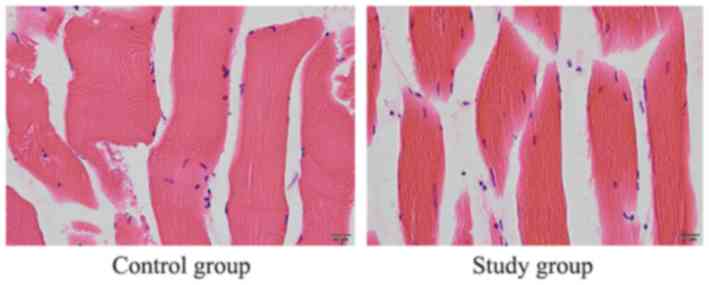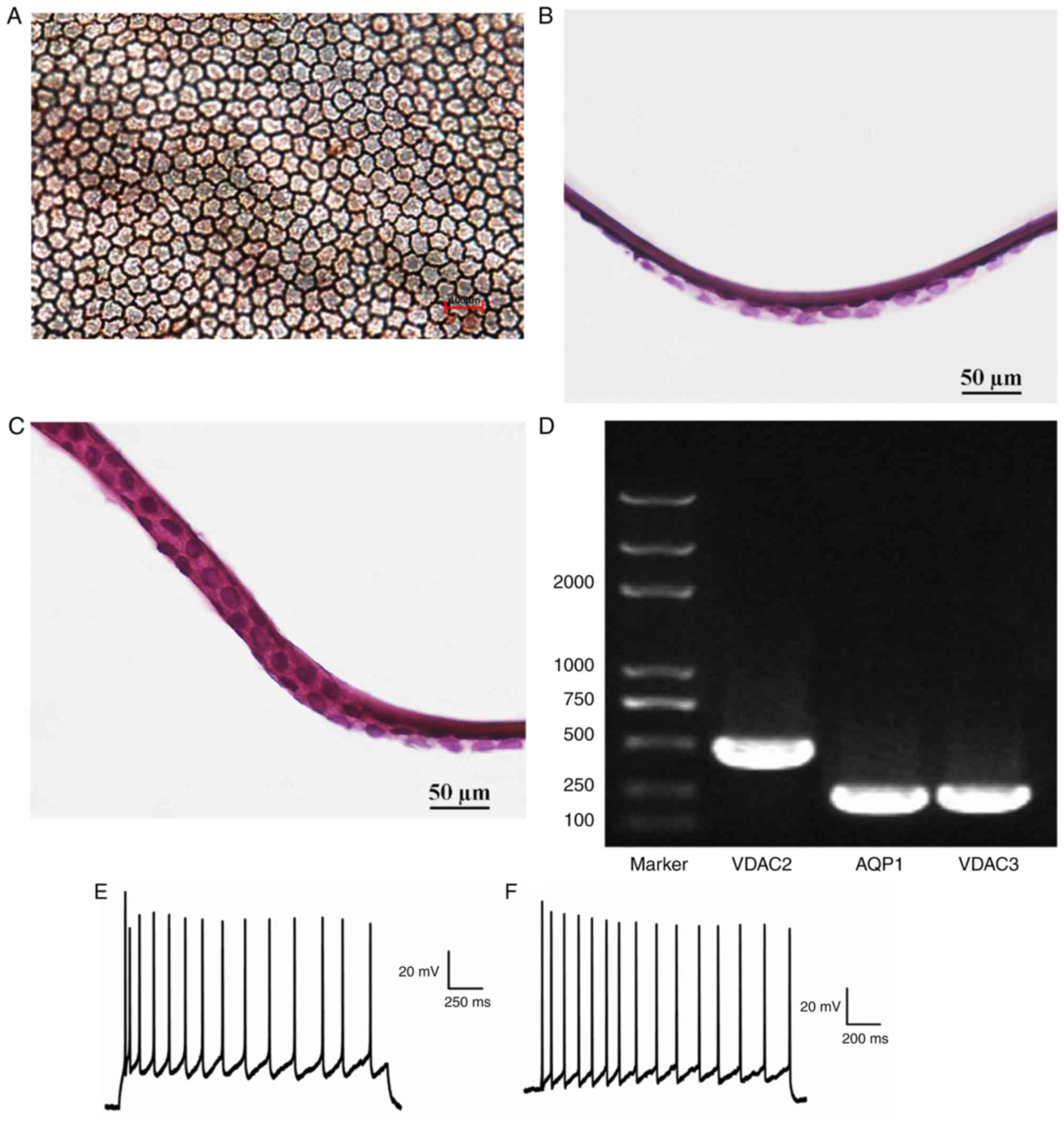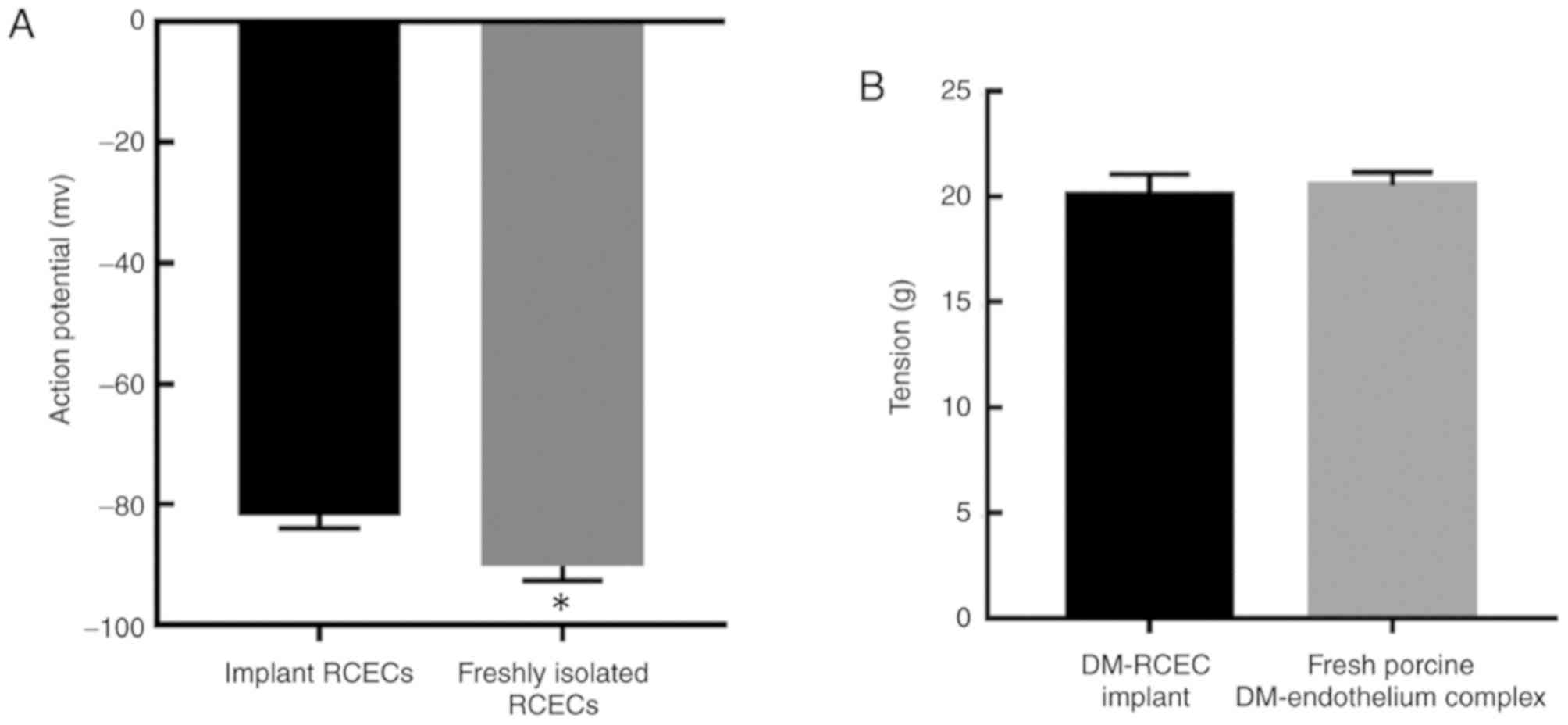|
1
|
Melles GR, Ong TS, Ververs B and van der
Wees J: Descemet membrane endothelial keratoplasty (DMEK). Cornea.
25:987–990. 2006. View Article : Google Scholar : PubMed/NCBI
|
|
2
|
Gospodarowicz D, Greenburg G and Alvarado
J: Transplantation of cultured bovine corneal endothelial cells to
species with nonregenerative endothelium. The cat as an
experimental model. Arch Ophthalmol. 97:2163–2169. 1979. View Article : Google Scholar : PubMed/NCBI
|
|
3
|
Niu G, Choi JS, Wang Z, Skardal A,
Giegengack M and Soker S: Heparin-modified gelatin scaffolds for
human corneal endothelial cell transplantation. Biomaterials.
35:4005–4014. 2014. View Article : Google Scholar : PubMed/NCBI
|
|
4
|
Fan T, Zhao J, Ma X, Xu X, Zhao W and Xu
B: Establishment of a continuous untransfected human corneal
endothelial cell line and its biocompatibility to denuded amniotic
membrane. Mol Vis. 17:469–480. 2011.PubMed/NCBI
|
|
5
|
Watanabe R, Hayashi R, Kimura Y, Tanaka Y,
Kageyama T, Hara S, Tabata Y and Nishida K: A novel gelatin
hydrogel carrier sheet for corneal endothelial transplantation.
Tissue Eng Part A. 17:2213–2219. 2011. View Article : Google Scholar : PubMed/NCBI
|
|
6
|
Honda N, Mimura T, Usui T and Amano S:
Descemet stripping automated endothelial keratoplasty using
cultured corneal endothelial cells in a rabbit model. Arch
Ophthalmol. 127:1321–1326. 2009. View Article : Google Scholar : PubMed/NCBI
|
|
7
|
Johnston MC, Noden DM, Hazelton RD,
Coulombre JL and Coulombre AJ: Origins of avian ocular and
periocular tissues. Exp Eye Res. 29:27–43. 1979. View Article : Google Scholar : PubMed/NCBI
|
|
8
|
Edelhauser HF: The balance between corneal
transparency and edema: The proctor lecture. Invest Ophthalmol Vis
Sci. 47:1754–1767. 2006. View Article : Google Scholar : PubMed/NCBI
|
|
9
|
Joyce NC, Meklir B, Joyce SJ and Zieske
JD: Cell cycle protein expression and proliferative status in human
corneal cells. Invest Ophthalmol Vis Sci. 37:645–655.
1996.PubMed/NCBI
|
|
10
|
Mimura T, Yamagami S and Amano S: Corneal
endothelial regeneration and tissue engineering. Prog Retin Eye
Res. 35:1–17. 2013. View Article : Google Scholar : PubMed/NCBI
|
|
11
|
Peh GS, Beuerman RW, Colman A, Tan DT and
Mehta1 JS: Human corneal endothelial cell expansion for corneal
endothelium transplantation: An overview. Transplantation.
91:811–819. 2011. View Article : Google Scholar : PubMed/NCBI
|
|
12
|
Nakagawa H, Yoshioka K, Miyahara E,
Fukushima Y, Tamura M and Itoh K: Intrathecal Administration of
Y-27632, a specific Rho-associated kinase inhibitor, for rat
neoplastic meningitis. Mol Cancer Res. 3:425–433. 2005. View Article : Google Scholar : PubMed/NCBI
|
|
13
|
Feng ZH, Zhang XH, Zhao JQ and Ma JZ:
Involvement of Rho-associated coiled-coil kinase signaling
inhibition in TGF-β1/Smad2, 3 signal transduction in vitro. Int J
Ophthalmol. 10:1805–1811. 2017.PubMed/NCBI
|
|
14
|
Okumura N, Inoue R, Okazaki Y, Nakano S,
Nakagawa H, Kinoshita S and Koizumi N: Effect of the Rho kinase
inhibitor Y-27632 on corneal endothelial wound healing. Invest
Ophthalmol Vis Sci. 56:6067–6074. 2015. View Article : Google Scholar : PubMed/NCBI
|
|
15
|
Zhang J, Cai H, Sun L, Zhan P, Chen M,
Zhang F, Ran Y and Wan J: LGR5, a novel functional glioma stem cell
marker, promotes EMT by activating the Wnt/β-catenin pathway and
predicts poor survival of glioma patients. J Exp Clin Cancer Res.
37:225–231. 2018. View Article : Google Scholar : PubMed/NCBI
|
|
16
|
Livak KJ and Schmittgen TD: Analysis of
relative gene expression data using real-time quantitative PCR and
the 2(-Delta Delta C(T)) method. Methods. 25:402–408. 2001.
View Article : Google Scholar : PubMed/NCBI
|
|
17
|
Serafini S, Santos MM, Aoun Tannuri AC,
Zerbini MCN, de Mendonça Coelho MC, de Oliveira Gonçalves J and
Tannuri U: Is hematoxylin-eosin staining in rectal mucosal and
submucosal biopsies still useful for the diagnosis of Hirschsprung
disease? Diagn Pathol. 12:842017. View Article : Google Scholar : PubMed/NCBI
|
|
18
|
Leyrer-Jackson JM, Olive MF and Gipson CD:
Whole-cell patch-clamp electrophysiology to study ionotropic
glutamatergic receptors and their roles in addiction. Methods Mol
Biol. 1941:107–135. 2019. View Article : Google Scholar : PubMed/NCBI
|
|
19
|
Esipov RS, Beĭrakhova KA, Chupova LA,
Likhvantseva VK, Stepanova EV and Miroshnikov AI: Recombinant
fragment of pigment epithelium-derived factor (44–77) prevents
pathological corneal neovascularization. Bioorg Khim. 38:78–85.
2012.(In Russian). PubMed/NCBI
|
|
20
|
Singh N, Higgins E, Amin S, Jani P,
Richter E, Patel A, Kaur R, Wang J, Ambati J, Dong Z and Ambati BK:
Unique homologous siRNA blocks hypoxia-induced VEGF upregulation in
human corneal cells and inhibits and regresses murine corneal
neovascularization. Cornea. 26:65–72. 2007.PubMed/NCBI
|
|
21
|
Mimura T, Yamagami S, Yokoo S, Araie M and
Amano S: Comparison of rabbit corneal endothelial cell precursors
in the central and peripheral cornea. Invest Ophthalmol Vis Sci.
46:3645–3648. 2005. View Article : Google Scholar : PubMed/NCBI
|
|
22
|
Okumura N, Kay EP, Nakahara M, Hamuro J,
Kinoshita S and Koizumi N: Inhibition of TGF-β signaling enables
human corneal endothelial cell expansion in vitro for use in
regenerative medicine. PLoS One. 8:e580002013. View Article : Google Scholar : PubMed/NCBI
|
|
23
|
Rieck P, Oliver L, Engelmann K, Fuhrmann
G, Hartmann C and Courtois Y: The role of exogenous/endogenous
basic fibroblast growth factor (FGF2) and transforming growth
factor beta (TGF beta-1) on human corneal endothelial cells
proliferation in vitro. Exp Cell Res. 220:36–46. 1995. View Article : Google Scholar : PubMed/NCBI
|
|
24
|
Soldano S, Paolino S, Pizzorni C,
Trombetta AC, Montagna P, Brizzolara R, Corallo C, Giordano N,
Sulli A and Cutolo M: Dual endothelin receptor antagonists contrast
the effects induced by endothelin-1 on cultured human microvascular
endothelial cells. Clin Exp Rheumatol. 35:484–493. 2017.PubMed/NCBI
|
|
25
|
Hsieh P and Baum J: Effects of
fibroblastic and endothelial extracellular matrices on corneal
endothelial cells. Invest Ophthalmol Vis Sci. 26:457–463.
1985.PubMed/NCBI
|
|
26
|
Okumura N, Koizumi N, Ueno M, Sakamoto Y,
Takahashi H, Hirata K, Torii R, Hamuro J and Kinoshita S:
Enhancement of corneal endothelium wound healing by Rho-associated
kinase (ROCK) inhibitor eye drops. Br J Ophthalmol. 95:1006–1009.
2011. View Article : Google Scholar : PubMed/NCBI
|
|
27
|
Bi YL, Zhou Q, Du F, Wu MF, Xu GT and Sui
GQ: Regulation of functional corneal endothelial cells isolated
from sphere colonies by Rho-associated protein kinase inhibitor.
Exp Ther Med. 5:433–437. 2013. View Article : Google Scholar : PubMed/NCBI
|
|
28
|
Joyce NC and Harris DL: Decreasing
expression of the G1-phase inhibitors, p21Cip1 and p16INK4a,
promotes division of corneal endothelial cells from older donors.
Mol Vis. 16:897–906. 2010.PubMed/NCBI
|
|
29
|
Ding V, Chin A, Peh G, Mehta JS and Choo
A: Generation of novel monoclonal antibodies for the enrichment and
characterization of human corneal endothelial cells (hCENC)
necessary for the treatment of corneal endothelial blindness. MAbs.
6:1439–1452. 2014. View Article : Google Scholar : PubMed/NCBI
|
|
30
|
Song Q, Yuan S, An Q, Chen Y, Mao FF, Liu
Y, Liu Q and Fan G: Directed differentiation of human embryonic
stem cells to corneal endothelial cell-like cells: A transcriptomic
analysis. Exp Eye Res. 151:107–114. 2016. View Article : Google Scholar : PubMed/NCBI
|
|
31
|
Wu RL, Zhu G, Galvin S, Xu C, Haseba T,
Chaloin-Dufau D, Dhouailly D, Wei ZG, Lavker RM, Kao WY, et al:
Lineage-specific and differentiation-dependent expression of K12
keratin in rabbit corneal/limbal epithelial cells: cDNA cloning and
northern blot analysis. Differentiation. 55:137–144. 1994.
View Article : Google Scholar : PubMed/NCBI
|
|
32
|
Ahearne M, Wilson SL, Liu KK, Rauz S, El
Haj AJ and Yang Y: Influence of cell and collagen concentration on
the cell-matrix mechanical relationship in a corneal stroma wound
healing model. Exp Eye Res. 91:584–591. 2010. View Article : Google Scholar : PubMed/NCBI
|
|
33
|
McCulley JP, Maurice DM and Schwartz BD:
Corneal endothelial transplantation. Ophthalmology. 87:194–201.
1980. View Article : Google Scholar : PubMed/NCBI
|
|
34
|
Liang Y, Liu W, Han B, Yang C, Ma Q, Song
F and Bi Q: An in situ formed biodegradable hydrogel for
reconstruction of the corneal endothelium. Colloids Surf B
Biointerfaces. 82:1–7. 2011. View Article : Google Scholar : PubMed/NCBI
|
|
35
|
Ishino Y, Sano Y, Nakamura T, Connon CJ,
Rigby H, Fullwood NJ and Kinoshita S: Amniotic membrane as a
carrier for cultivated human corneal endothelial cells
transplantation. Invest Ophthalmol Vis Sci. 45:800–806. 2004.
View Article : Google Scholar : PubMed/NCBI
|
|
36
|
Diao YM and Hong J: Feasibility and safety
of porcine Descemet's membrane as a carrier for generating
tissue-engineered corneal endothelium. Mol Med Rep. 12:1929–1934.
2015. View Article : Google Scholar : PubMed/NCBI
|
|
37
|
Choi HJ, Kim MK, Lee HJ, Ko JH, Jeong SH,
Lee JI, Oh BC, Kang HJ and Wee WR: Efficacy of pig-to-rhesus
lamella corneal xenotransplantation. Invest Ophthalmol Vis Sci.
52:6643–6650. 2011. View Article : Google Scholar : PubMed/NCBI
|
|
38
|
Murphy SV and Atala A: Organ
engineering-combining stem cells, biomaterials, and bioreactors to
produce bioengineered organs for transplantation. Bioessays.
35:163–172. 2013. View Article : Google Scholar : PubMed/NCBI
|
|
39
|
Gospodarowicz D and Greenburg G: The
coating of bovine and rabbit corneas denuded of their endothelium
with bovine corneal endothelial cells. Exp Eye Res. 28:249–265.
1979. View Article : Google Scholar : PubMed/NCBI
|
|
40
|
Chen KH, Azar D and Joyce NC:
Transplantation of adult human corneal endothelium ex vivo: A
morphologic study. Cornea. 20:731–737. 2001. View Article : Google Scholar : PubMed/NCBI
|
|
41
|
Jumblatt MM, Maurice DM and McCulley JP:
Transplantation of tissue-cultured corneal endothelium. Invest
Ophthalmol Vis Sci. 17:1135–1141. 1978.PubMed/NCBI
|
|
42
|
Thinnes FP: Neuroendocrine differentiation
of LNCaP cells suggests: VDAC in the cell membrane is involved in
the extrinsic apoptotic pathway. Mol Genet Metab. 97:241–243. 2009.
View Article : Google Scholar : PubMed/NCBI
|
|
43
|
McIntosh Ambrose W, Salahuddin A, So S, Ng
S, Ponce Márquez S, Takezawa T, Schein O and Elisseeff J: Collagen
Vitrigel membranes for the in vitro reconstruction of separate
corneal epithelial, stromal, and endothelial cell layers. J Biomed
Mater Res B Appl Biomater. 90:818–831. 2009. View Article : Google Scholar : PubMed/NCBI
|
|
44
|
Neher E and Sakmann B: Single channel
currents recorded from membrane of denervated frog muscle fibers.
Nature. 260:799–802. 1976. View Article : Google Scholar : PubMed/NCBI
|















